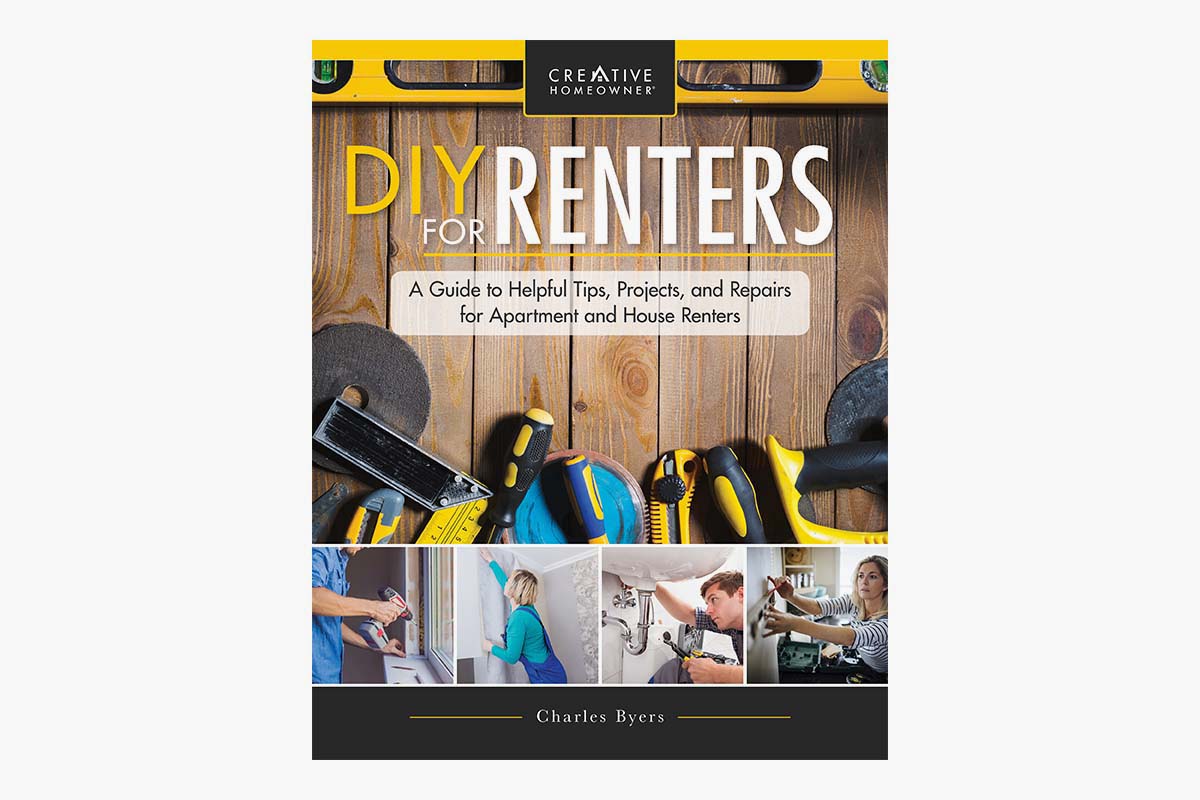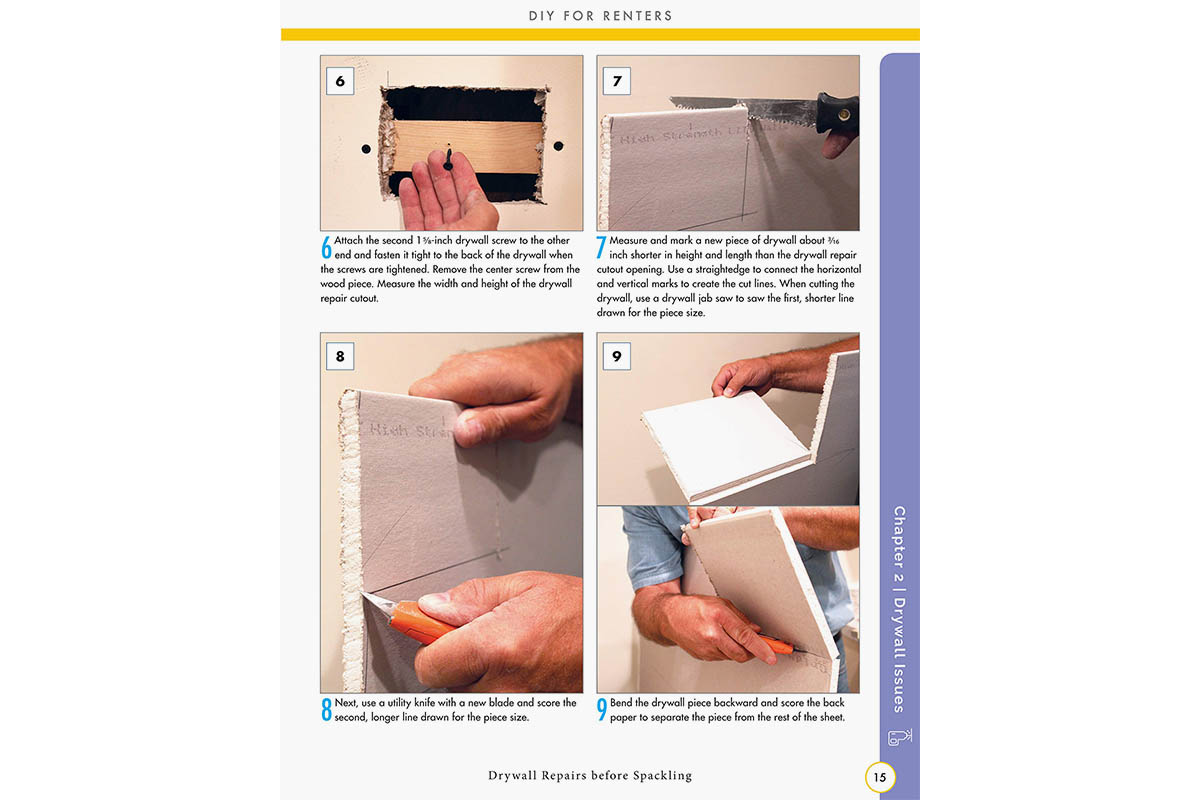Two months into quarantine, all the issues with your home or apartment have likely become abundantly apparent. If you rent instead of buy and you’re trying to limit contact with people, this is the time to take charge … minimally. There are repairs and upgrades you can execute without going overboard; obviously you need to be careful so you can still get your security deposit back.
To start, you should consult DIY For Renters: Don’t Call the Landlord (Creative Homeowner/Fox Chapel Publishing) by DIY expert Charles Byers., the just-released maintenance guide for anyone on a lease who needs some home self-help.
DIY covers everything from drywall repair to painting to electrical and plumbing issues, all with straightforward, step-by-step instructions and plenty of photos. It’s a bit more advanced than a For Dummies book, but anyone who’s even moderately familiar with tools should be able to follow along with ease.

Byers, a former carpentry instructor at the Thaddeus Stevens College of Technology and a current teacher at the school’s residential remodeling department, expanded on the book’s ideas for us during this time of being stuck at home … when we really should be doing something useful with our time.
Five things we learned:
The one area you should target if you’re absolutely terrible at home repairs
“There are two basic repairs that take very little effort to do, and both deal with swinging doors,” says Byers. The first is when the door sticks when it’s closed; there are multiple methods covered in the book, but the simplest involves removing the top-hinge short screw and replacing it with a 2″ long screw of the same head diameter using a power screwdriver on low-speed. “This will pull the door jamb closer to the framing behind it to secure the door, since during the door’s life it shifted due to its weight.”
And if you have a door that won’t stay open without an object holding it back? Per Byers: First, see if any hinge screws are loose. Next, remove the bottom hinge pin. Lay the pin on a solid surface using a wooden block under the pin, then use a hammer to strike the pin in the center of its length. This will deform the pin slightly so that when it is re-inserted into the hinge, it will create friction. If this helps but does not eliminate the issue, remove the bottom pin and create an additional bend in the pin by repeating the striking method.

The repairs you should be doing right now, during stay-at-home orders
“I suggest doing any repair that does not involve a lot of expense or time,” says Byers, who gave us a list of some of the “simplest and less expensive” repairs or maintenance items, which include: replacing furnace air filters and in–line water filters; checking clearances for weeds and overgrown grass and leaves around the outdoor heat pump or central air compressor units; removing and re-screening window screens; clearing floor registers and cold-air wall registers of cobwebs; changing batteries in smoke/CO2 detectors; power washing the walkways outside; and cleaning the gutters for the spring rains.

These are the repairs to leave to experts
“My rule is that anything that requires a licensed professional to perform the task or anything beyond your comfort zone,” says Byers. Some examples include repairing sewer lines, or anything that involves the live electrical service panel in a building. As well, renters should avoid any repairs that would “majorly alter any part of the building,” because if you attempt something like this (e.g., replacing the vinyl floor that’s over a concrete slab in the bathroom with carpet), you are assuming the entire expense and the possibility of the landlord not liking the type or quality of work you performed. Instead, contact the landlord to get permission for a professional to come in.
The random tool everyone should own
“With electrical outlets in a building, especially older outlets that may cause issues, I recommend a polarity plug tester,” says Byers. It can come in handy when, for example, the toaster doesn’t work in the morning. A plug tester in a three-prong outlet will instantly signal if the receptacle is live, in good working order and if there’s any other issue (which will be detected and readable by the tester’s LED light sequences). “So if those three things are good, you need a new toaster.”
And finally, since I can hear my neighbors 24-7 (and vice versa), a fix for squeaky floors
An issue in this writer’s apartment doesn’t have an easy answer. If you have access to the bottom of the floor, Byers says there are solutions (long story short, they involve attaching 2”x4” pieces of wood to floor joists). But in a third-level apartment in a larger rental building in Brooklyn, my options appear limited to noise-canceling headphones and realizing we’re all in this together … and hey, I do have a door that won’t stay open.
This article appeared in an InsideHook newsletter. Sign up for free to get more on travel, wellness, style, drinking, and culture.























